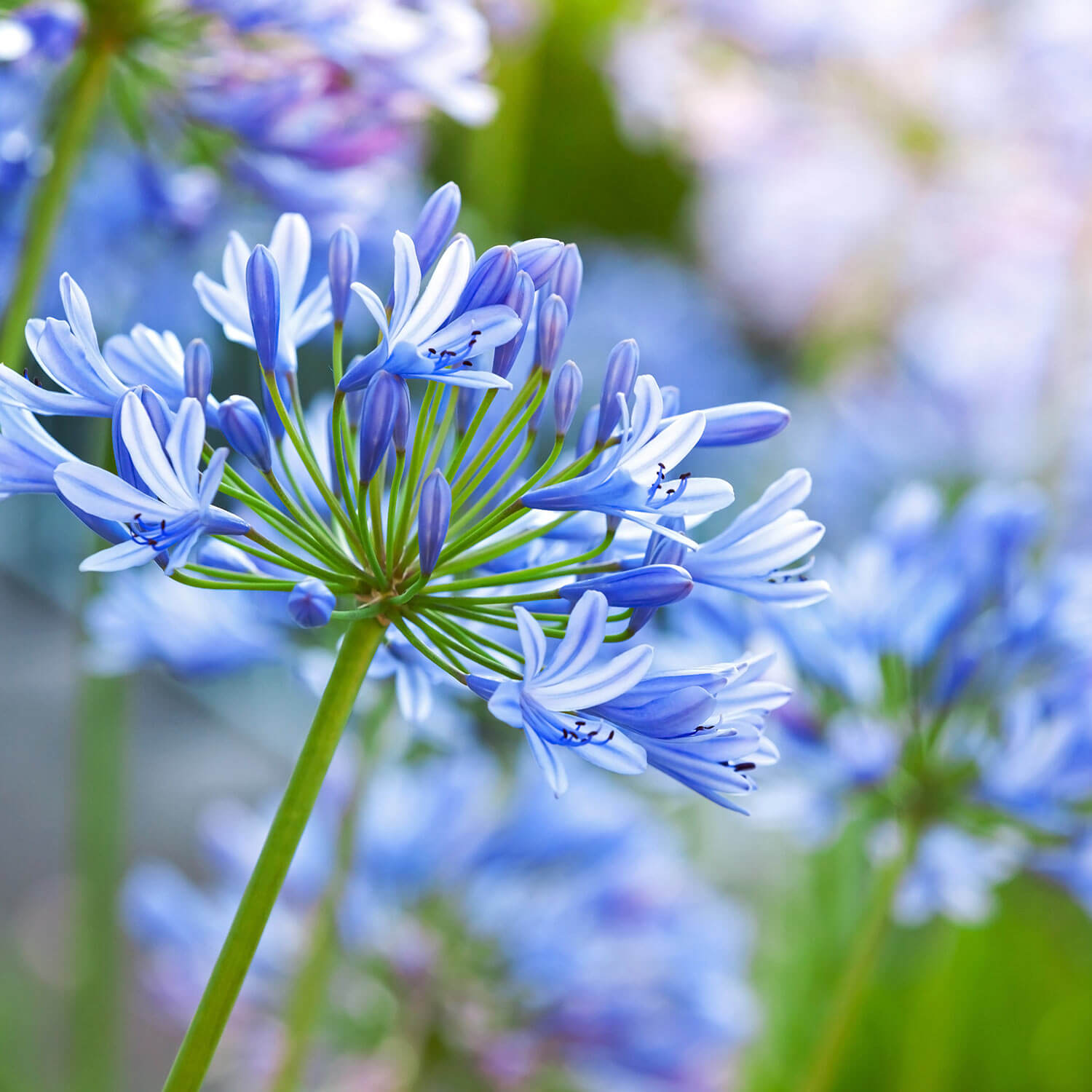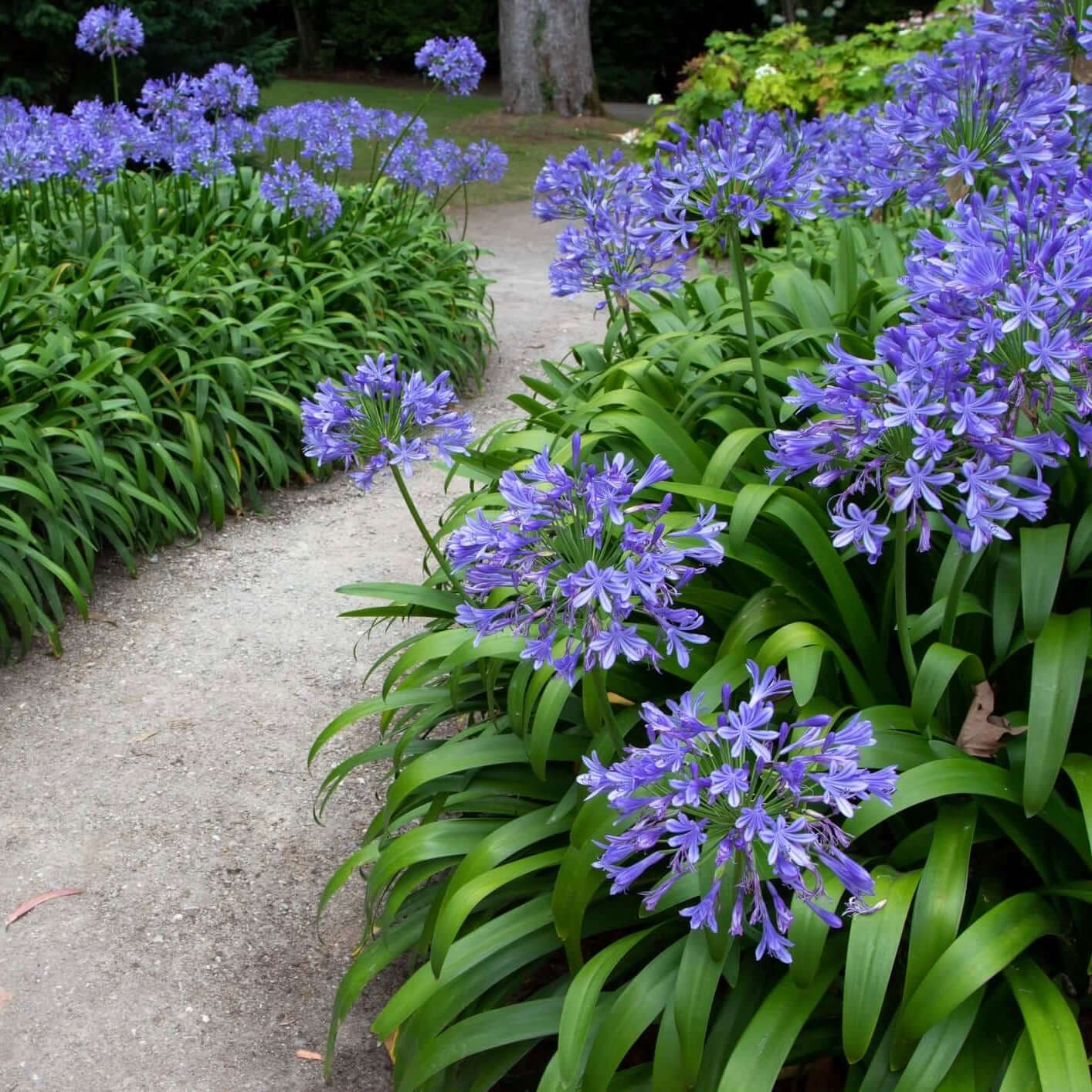Just how to Plant and Maintain Agapanthus in Your Garden
Just how to Plant and Maintain Agapanthus in Your Garden
Blog Article
Letting Loose the Secret to Effective Agapanthus Growing: Advice for a Flourishing Garden
In the world of gardening, growing agapanthus successfully requires a critical approach that incorporates different facets of plant treatment. By recognizing the subtleties of agapanthus farming, one can produce an environment where these plants flourish and grow abundantly.
Growing Agapanthus: Ideal Practices
When planting Agapanthus, appropriate soil prep work is crucial for making sure effective growth and development of these stunning blossoms. Agapanthus, commonly referred to as Lily of the Nile or African lily, prospers in well-draining soil with a somewhat acidic to neutral pH level - Agapanthus. Prior to planting, it is vital to modify hefty clay soils with natural issue such as compost or peat moss to improve drainage and provide important nutrients for the plants
To grow Agapanthus, pick an area that gets complete sunshine to partial shade, as this will advertise healthy development and abundant blooming. Dig an opening two times the diameter of the plant's root sphere and position the Agapanthus at the very same depth it was formerly growing. Gently backfill the hole with dirt, weighing down firmly to eliminate any type of air pockets around the origins.
Water the freshly grown Agapanthus thoroughly and proceed to keep the soil equally damp, especially throughout the plant's energetic growing season. Agapanthus. Using a balanced plant food once a month can even more sustain the plant's development and blooming. By adhering to these ideal practices for planting Agapanthus, you can produce a sensational display of these captivating flowers in your garden
Perfect Soil Issues for Agapanthus
For optimal development and growing success of Agapanthus plants, guaranteeing the soil problems are excellent is crucial. Agapanthus flourishes in well-draining soil with a somewhat acidic to neutral pH level ranging from 6.0 to 7.0. This kind of dirt permits appropriate water drainage, stopping waterlogging which can bring about root rot. To improve dirt water drainage, consider adding organic issue such as garden compost or peat moss when preparing the growing website. In addition, Agapanthus likes soil that is abundant in nutrients, so including a balanced fertilizer throughout the expanding season can promote healthy and balanced growth and vibrant blooms.

Watering and Fertilizing Tips
To make certain healthy growth and vibrant flowers, appropriate watering and feeding methods are crucial for effective Agapanthus cultivation. Agapanthus plants benefit from regular watering, particularly during the growing season.
When it comes to fertilizing Agapanthus, a well balanced plant food with equal components nitrogen, phosphorus, and potassium can be applied in the springtime to promote healthy development and blooming. Slow-release fertilizers are excellent for providing nutrients slowly over an extensive duration. Avoid over-fertilizing, as this can bring about excessive vegetation development at the cost of blossoms.
Furthermore, incorporating raw material like compost right into the soil can improve nutrient degrees and improve dirt structure, assisting in the total health and wellness of the Agapanthus plants. By complying with these watering and feeding pointers, garden enthusiasts can ensure their Agapanthus plants prosper and generate sensational displays of blossoms.
Trimming and Deadheading Strategies
Correct trimming and deadheading methods play a vital duty in keeping the health and wellness and aesthetics of Agapanthus plants, matching the necessary practices of watering and fertilizing for successful growing. Trimming Agapanthus includes eliminating spent blossom heads, yellowing or dead leaves, and total shaping of the plant to promote much better development. Deadheading, the process of getting rid of discolored blossoms, not only enhances the plant's appearance but additionally encourages more blooming.
When deadheading Agapanthus, it is advisable to clip off the blossom stem at the base using sharp, clean shears. This process reroutes the plant's energy from seed manufacturing back right into origin and foliage development, promoting a healthier and more robust plant. Normal deadheading can expand the flowering duration of Agapanthus and protect against self-seeding, which can result in congestion.
In terms of pruning, Agapanthus usually gain from a light trim after blooming view it now to clean the plant and encourage fresh growth. Reducing the invested flower stems and eliminating any broken or dead foliage aids preserve the plant's vigor and overall appearance. Nevertheless, it is important to prevent reducing into the crown of the plant, as this can weaken its health.

Protecting Agapanthus From Vermins and Diseases
Carrying out effective bug and condition management approaches is important to guarding the health and vigor of Agapanthus plants in growing. One usual pest that influences Agapanthus is the Agapanthus borer, a caterpillar that tunnels right into the plant, creating damage to the fallen leaves and flowers.
In enhancement to pests, Agapanthus are prone to illness such as origin rot and fungal leaf areas. These concerns can often be why not look here prevented by guaranteeing correct drainage and preventing overwatering. Influenced parts of the plant must be without delay eliminated to protect against further his comment is here spread if signs of illness appear. Fungicides might additionally be used as a therapy step, complying with the maker's directions very carefully. By remaining attentive and resolving parasite and condition issues promptly, gardeners can aid their Agapanthus flourish and thrive.

Final Thought
To conclude, successful growing of agapanthus needs appropriate growing methods, ideal dirt conditions, appropriate watering and feeding, routine trimming and deadheading, and defense from illness and insects. By complying with these techniques and tips, gardeners can make sure a growing garden loaded with beautiful agapanthus flowers. Agapanthus. Remember to keep constant care and interest to information to advertise the health and wellness and long life of these stunning plants
When planting Agapanthus, appropriate dirt prep work is important for making sure successful development and advancement of these stunning flowers.Water the recently grown Agapanthus thoroughly and continue to keep the soil equally wet, especially throughout the plant's active expanding period.For ideal development and flowering success of Agapanthus plants, making sure the soil conditions are optimal is critical. When growing or hair transplanting Agapanthus, guarantee the soil is well-prepared to offer the required structure for the plants to develop themselves efficiently. One common pest that impacts Agapanthus is the Agapanthus borer, a caterpillar that passages right into the plant, triggering damages to the fallen leaves and flowers.
Report this page